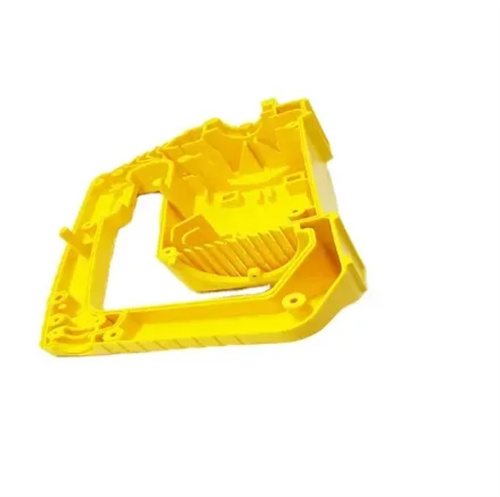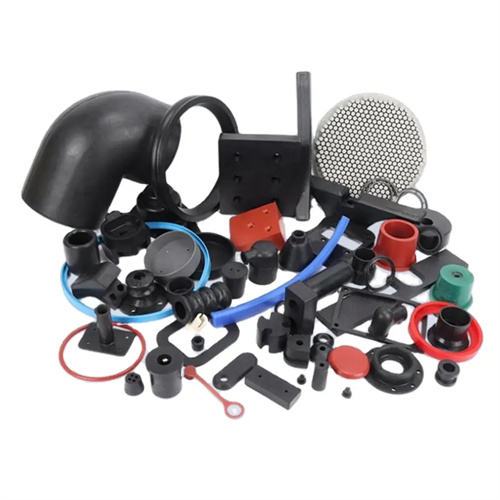Hydraulic – Single toggle clamping device
The hydraulic single-toggle clamping mechanism is a key component in injection molding machines that combines the advantages of hydraulic drive and mechanical force amplification. Its core structure consists of a single toggle connecting rod, a clamping cylinder, a movable platen, and a fixed platen. It is widely used in small and medium-sized injection molding machines. The mechanism operates by using a hydraulic cylinder to propel the toggle mechanism, amplifying force by leveraging the toggle during the clamping process. This mechanism retains the stable output of the hydraulic system while leveraging the mechanical structure to increase clamping force, reaching several times the cylinder thrust. For example, when the cylinder thrust is 50kN, the clamping force can reach 200-300kN after amplification by the single toggle mechanism, meeting the molding requirements of most small and medium-sized products. This structure gradually slows down the speed during the final stages of the clamping process, while gradually increasing the clamping force. This prevents rigid impact and protects the mold and equipment.

The toggle mechanism design of a hydraulic single-toggle clamping unit is central to its performance. The toggle angle and connecting rod length ratio directly influence the clamping force amplification factor and kinematic characteristics. The toggle’s hinge point distribution is typically precisely calculated. When the toggle is fully extended (i.e., fully closed), the mechanism is at its dead center, achieving maximum clamping force and optimal stability, effectively resisting melt pressure during the injection molding process. The toggle angle gradually changes from an initial acute angle to 180° during the clamping process. The rate of change determines the clamping speed and force amplification curve, requiring a uniform angle change during design to avoid sudden speed changes. For example, an initial toggle angle of 30°, which increases uniformly to 180° during the clamping process, can initially increase the clamping speed and then decrease it, improving production efficiency while ensuring smooth contact at the end of the clamping phase.

The hydraulic system design of this device must be compatible with the characteristics of the toggle mechanism. The hydraulic system is primarily responsible for driving the toggle movement, including mold closing, mold opening, and mold adjustment. During mold closing, the hydraulic pump supplies oil to the clamping cylinder, pushing the piston rod out and deploying the toggle mechanism. During mold opening, oil is reversed, retracting the piston rod and collapsing the toggle mechanism. Proportional pressure and flow valves in the hydraulic system control the pressure and speed of the cylinders, ensuring smooth and controllable toggle movement. Because the toggle mechanism’s force amplification increases dramatically during the late stages of mold closing, the hydraulic system pressure does not need to be excessively high; a typical operating pressure of 10-15 MPa is sufficient, reducing the load and energy consumption of the hydraulic system. Furthermore, the system must include an overload protection device. When the clamping force exceeds the set value, a relief valve releases pressure to prevent damage to the toggle mechanism or the mold.

The platen guide and support structure of the hydraulic single-toggle clamping mechanism are crucial to mold clamping accuracy. Four tie rods are typically used to guide the movable and fixed platens. These tie rods must possess sufficient rigidity and straightness to ensure smooth, undeflected movement of the movable platen. Sliding bearings or rolling bearings are used to connect the tie rods to the movable platen. Sliding bearings are low-cost but exhibit high friction resistance, while rolling bearings offer high precision and low resistance, making them suitable for applications requiring high mold clamping accuracy. The platen itself is constructed of high-strength cast iron or welded steel plates, and undergoes an aging treatment to eliminate internal stresses and prevent deformation after long-term use. The platen parallelism error must be controlled within 0.05 mm/m. Failure to do so will result in uneven clamping force distribution, affecting part quality or damaging the mold.

In practice, the hydraulic single-toggle clamping mechanism requires regular maintenance to ensure stable performance. Routine maintenance includes checking the lubrication of the toggle hinge and regularly adding high-temperature grease to prevent wear caused by dry friction. The hydraulic oil level and contamination level should be checked, and the filter should be replaced and cleaned every six months to prevent impurities from clogging the valve block or wearing the cylinder seals. To monitor wear on the toggle mechanism, the clearance between the hinge shaft and the sleeve should be regularly measured. If the clearance exceeds 0.1mm, the sleeve should be replaced promptly to prevent a decrease in clamping accuracy. Furthermore, the mold adjustment mechanism requires regular calibration to ensure accurate clamping force settings to avoid flashing due to insufficient clamping force or mold deformation due to excessive clamping force. Proper maintenance and care can ensure stable performance and extend the life of the hydraulic single-toggle clamping mechanism.
